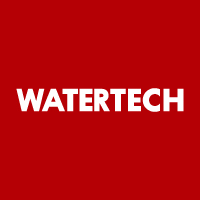
In 2024, Chinese-manufactured water purifiers solidified their dominance across global e-commerce platforms, leveraging competitive pricing, advanced technology, and agile digital marketing. As concerns over water quality and affordability escalate, brands like Xiaomi, Midea, and Haier have tailored their strategies to meet diverse regional demands, driving unprecedented growth in online sales. This article analyzes their performance across key markets and explores emerging trends poised to reshape the industry beyond 2025.
North America: Affordability Meets Certification Compliance
In the U.S. and Canada, Chinese water purifiers gained traction through platforms like Amazon and Walmart.com, where cost-conscious consumers prioritize value without compromising safety. Reverse osmosis, RO systems from Xiaomi and Angel, priced 30–50% below U.S. brands, dominated sales, particularly in states like California and Texas with recurring drought concerns. These products succeeded by securing NSF/ANSI certifications e.g., NSF 53 for lead reduction, a critical trust factor for North American buyers.
Amazon's Climate Pledge Friendly badge further boosted sales of energy-efficient models, such as Midea's solar-compatible RO units. Meanwhile, Canadian e-commerce saw a 25% year-on-year increase in faucet-mounted filters, driven by Haier's English French bilingual product listings on Newegg.ca.
Europe: Sustainability and Smart Tech Drive Demand
Europe's focus on sustainability and stringent regulations shaped its e-commerce landscape. Platforms like Amazon.de and Zalando prioritized purifiers compliant with the EU Drinking Water Directive and RoHS standards. Brands like Joyoung and EcoPure capitalized on this by marketing recyclable filters and low-energy RO systems, which constituted 40% of Germany's online sales.
In Southern Europe, solar-powered purifiers thrived. Gree's compact solar RO units, sold via Italy's ePrice and Spain's PC Componentes, saw a 60% sales spike during summer droughts. Northern Europe, meanwhile, favored smart purifiers integrated with IoT platforms like Google Home. Xiaomi's Wi-Fi-enabled models, offering real-time TDS monitoring, became top sellers on Sweden's Prisjakt.
Asia-Pacific: Diverse Markets, Localized Strategies
Asia-Pacific remained the largest market, with sales split between premium and budget segments. On India's Flipkart and Amazon.in, Chinese brands like Pureit by Unilever and Kent RO dominated with sub-$100 systems tailored to remove arsenic and fluoride from groundwater. These products accounted for 70% of India's online purifier sales in Q1 2024.
In Southeast Asia, Shopee and Lazada saw soaring demand for ceramic filters suited to humid climates. Qinyuan Group's $50 units, marketed as mold-resistant topped sales in Indonesia and the Philippines. Conversely, Australia's Amazon.au and Catch.com.au favored high-end UV purifiers, with Breville, a Haier subsidiary, capturing 30% market share through premium listings emphasizing durability in coastal conditions.
Middle East & Africa: Off-Grid Solutions Gain Momentum
The Middle East's reliance on desalination fueled demand for RO systems capable of handling high TDS levels. On Noon.com and Amazon.ae, Bluetech Robotics' stainless steel RO purifiers became bestsellers, with UAE sales growing 45% year-on-year. In Africa, Jumia and Kilimall reported surging orders for portable, solar-powered units. Shenzhen's Solavida, offering UV-C sterilization at $80–$120, emerged as Kenya’s top-selling brand, addressing off-grid needs in rural areas.
Latin America: Navigating Volatility with Value
Latin America's e-commerce growth, led by MercadoLibre and Amazon Mexico, centered on budget-friendly RO systems. Midea's AquaPro series, priced at $150–$200, led sales in Brazil and Mexico by addressing hard water issues. Political instability in Argentina and Venezuela pushed consumers toward AliExpress, where Xiaomi's drip filters offered a low-cost alternative to bottled water.
Trends Beyond 2025: Innovation and Expansion
Looking ahead, Chinese manufacturers are poised to leverage AI and sustainability to maintain dominance. By 2026, expect AI-driven purifiers that predict filter lifespan and optimize energy use, such as Haier's prototype with Baidu's ERNIE AI. Solar hybrid systems will expand into untapped markets like Central Asia, while biodegradable filters, already in development by Xiaomi, could reduce plastic waste by 50%.
E-commerce platforms will deepen partnerships with Chinese brands for exclusive launches, akin to Amazon's 2024 "Prime Day" collaboration with Midea. Additionally, augmented reality, AR tools for virtual installations, tested on Lazada in 2024, will become standard, enhancing consumer confidence in online purchases.
Three Key Takeaways
Certification and Localization: Compliance with regional standards such as NSF, CE, BIS and localized marketing are critical for e-commerce success.
Affordability vs. Premiumization: Emerging markets prioritize budget solutions, while mature markets demand smart, sustainable tech.
Tech-Driven Future: AI, solar integration, and AR will redefine consumer engagement and product functionality post-2025.
Disclaimer
The data and trends cited are based on industry reports and e-commerce analytics available as of July 2024. Market dynamics may shift due to regulatory changes, geopolitical factors, or technological disruptions. Readers should verify details with up-to-date sources before making business decisions.
